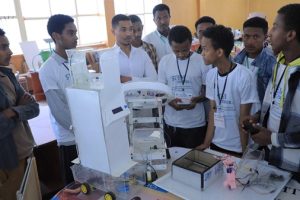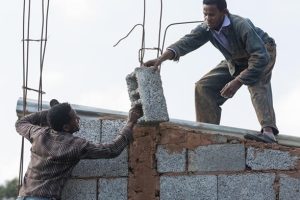
BY LEULSEGED WORKU
The issue of illegal migration and preventing it is one of the top priorities of the Ethiopian government. Seeing its horrific face, the government, together with other stakeholders, is doing its level best to curb illegal migration and arrange legal ways of working outside of Ethiopia to benefit its citizens. However, due to false promises by illegal smugglers and other factors, there are still reports of illegal migration. According to sources, young Ethiopians are smuggled from different towns in the East African nation to Europe, the Middle East, and South Africa to get better salaries and support their families. However, this is not always true, for there are instances of hardship during their travel.
According to the International Center for Migration Policy Development 2023 report, there are more than 20 active refugee situations in Africa, many of them protracted over long time periods and simultaneously including inflows and outflows of refugees but also involving large-scale internal displacement. The report further indicated that, the Horn of Africa and the Great Lakes region hosted 4.95 million refugees and asylum seekers in mid-2022, mostly from South Sudan, 5% more than the year before. Moreover, the region recorded more than 12 million IDPs, mostly in Sudan, South Sudan, Ethiopia, Somalia, and Burundi. Political instability, climate change, economic factors, and drought are some of the reasons behind migration in the Horn of Africa. The drought in the Horn of Africa alone has forced 1.1 million people to flee for survival; similar events can be expected in many other parts of Africa as well. African migration (and displacement) is overwhelmingly regional, and the spillover to other world regions is small.
Ethiopian youth are part of this illegal migration. Due to such reasons, Ethiopian illegal migrants have lost their priceless lives, and several women have been exposed to inhuman treatment or ended up becoming slaves to their owners without getting any financial reward for their service. In response to this, the Ethiopian government is repatriating hundreds of thousands of its citizens from Middle Eastern countries and providing them with job opportunities. However, either misled by illegal human traffickers or neglecting the warnings of the government, there are still several Ethiopians who have taken illegal migration as an option. As part of its effort to curb such illegal migration, the government and stakeholders are seen taking the initiative to bring about a sustainable solution.
On a nationwide discussion that was held recently in Dire Dawa City, the Ministry of Women and Social Affairs, Public Relations, and Communications, Executive Director, Dereje Taye, told local media that the ongoing discussion has a key role in further strengthening the coordinated work to prevent illegal immigration at the national level through strong community participation. According to him, while there are alternative job opportunities in the country, several citizens are facing serious inhuman treatment due to illegal migration.
“Efforts to prevent and avoid illegal human trafficking have been strengthened by coordinating with the relevant bodies. Increase in the magnitude of human trafficking in the country due to false promises of smugglers given to victims and low awareness of the youth in rural areas.” In order to prevent such a challenge, the Ministry, together with relevant stakeholders, is working aggressively to prevent illegal migration and provide alternative job opportunities. This includes the provision of training and creating business opportunities at all levels. Preventing illegal migration is not a simple task. Without coordinated efforts by the government, stakeholders, and the provision of proper information to migrants about the harshest sides of illegal migration, it would be difficult to control the situation.
According to the International Center for Migration Policy Development 2023 report, due to the global economic crisis and political instability, most African countries are prone to mass migration. “Globally, 44% of all internally or externally displaced persons originate from an African country. Quoting the African Center for Strategic Studies, ICMPD also indicated that their total number stood at 36 million in 2022, a 12% increase (or an increase of 3.7 million people) in comparison to 2021. 75% of them are displaced inside their home country, 19% are hosted in a neighboring country; and six percent have sought asylum further afield. Thus, the number of Africans displaced has more than tripled over the last decade.”
Sources indicated that it is very difficult to come up with accurate figures about the number of irregular Ethiopian migrants who fall victims of human trafficking, but there are estimates that hundreds of thousands of irregular migrants cross the Ethiopian border annually. Creating awareness among rural society, particularly by informing parents, families, and the general public about the horror of illegal migration, is the first step towards saving the lives of innocent young migrants.
Illegal migration is a great concern for policymakers, as the flows of the population can significantly affect local politics, social, economic, and ecological structures in both sending and receiving countries. The active involvement of parents, families, legal authorities, and the community as a whole plays a key role in addressing the challenge.
THE ETHIOPIAN HERALD TUESDAY 13 JUNE 2023





